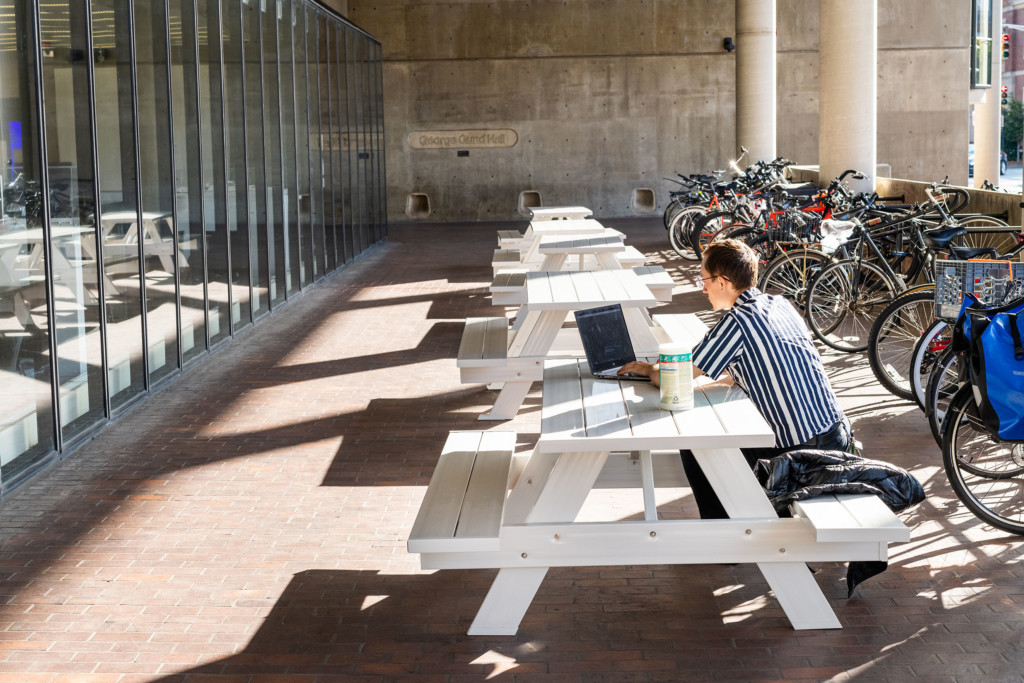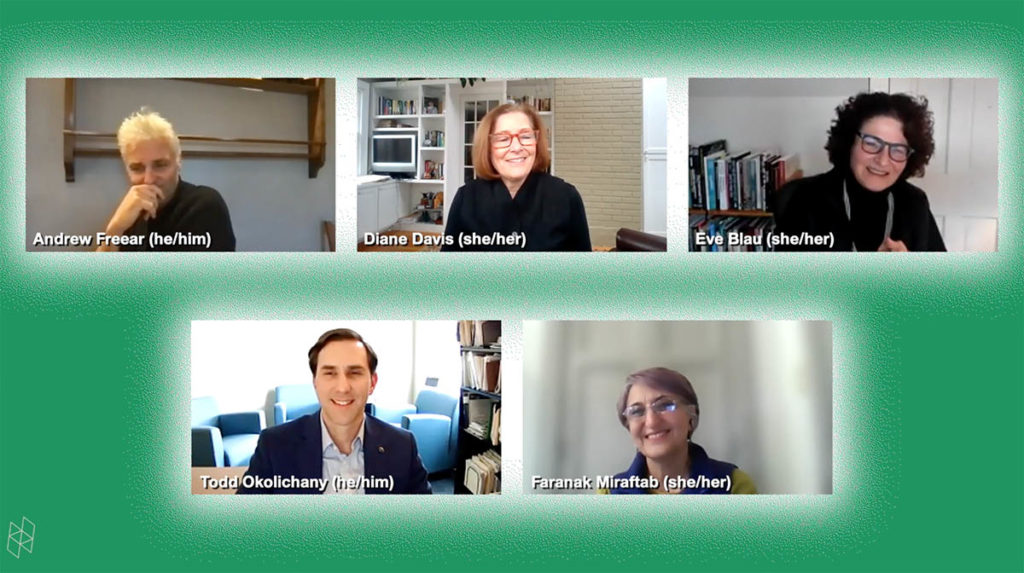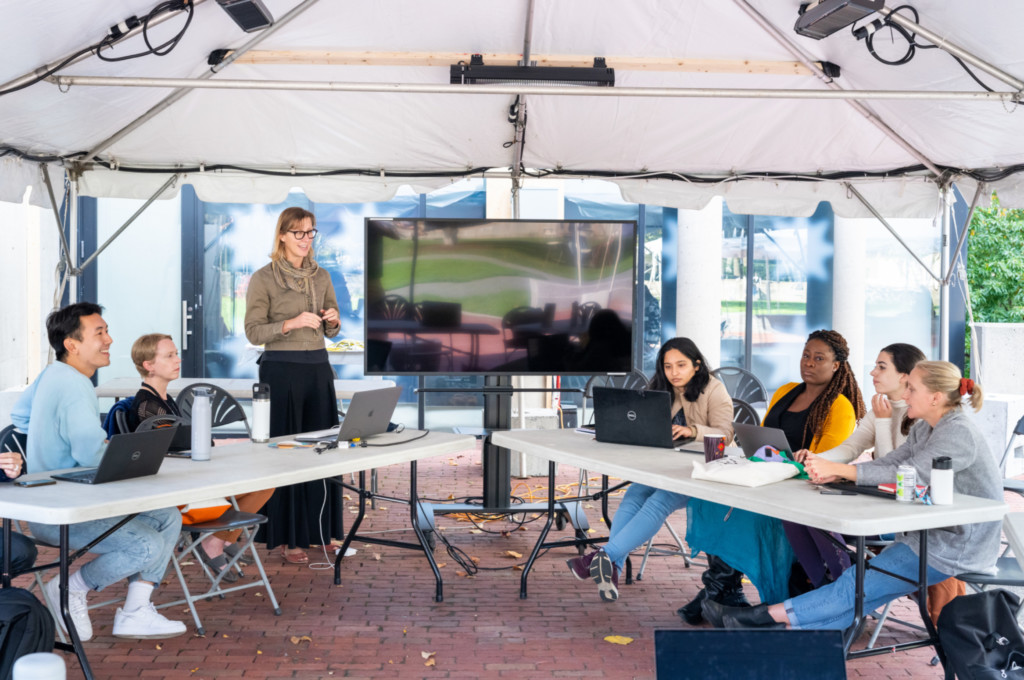
COVID-19 is undeniably the defining experience of a generation. Globally, few people have escaped its effects—either the direct effects of disease or the indirect ones of economic disruptions, public health requirements, and workplace changes. COVID has redefined possible futures in the minds of many.
How has this period changed urban life and the work of urban planners and designers? The short version is that this has been a moment of openness to new ideas. And it has sped up some preexisting trends—such as using video communication at work and deliveries at home. However, some more difficult challenges—like providing affordable healthy housing or comprehensive healthy placemaking—remain out of reach.
The view from the early pandemic
In March 2020, nine days after Harvard announced it would close its doors and go online due to COVID, I wrote an op-ed for this site trying to untangle what was happening and what it meant for urban planning and design. I reported that vaccines were estimated to be six to 18 months away, and indeed the Pfizer-BioNTech vaccine received emergency authorization nine months later. Facing an interim period where inaction would lead to many deaths and overwhelmed hospitals, countries were embarking on a mixture of strategies that would manage and even largely suppress the virus. Terms that had been largely confined to public health circles, such as social and physical distancing, were to become very familiar.
Estimates at the time, notably from Imperial College in London, were that without these measures two million in the US would die of COVID-19 by October 2020. Ultimately, the death toll in the US in 2020 was 350,000 people. However, new variants that were more contagious or more deadly sprang up before vaccines were available or widely used. Vaccinations were politicized, meaning fewer people were vaccinated than had been projected. Governments juggled the need to protect health while maintaining economic activity, and even though those conflicts were overblown, they lessened the power of public health arguments. At the two-year anniversary of the Harvard announcement, US deaths are now approaching one million.
Other countries have suffered from these same issues with different flavors and to different extents. China had COVID cases starting in late 2019, with the first Wuhan lockdown in January 2020. Along with some island countries, China has employed a suppression strategy—keeping its borders more firmly closed. In Africa, vaccines have been slow to arrive.
The COVID experience will shape the ways planners and designers think about a healthy environment.
In March 2020, when I wrote my op-ed, it was already apparent that there would be economic ramifications, travel disruptions, supply chain issues, and stress. Some of these negatives came from the pandemic itself, but others were likely fallout from the response. At that time, commentators were already forecasting the end of urban life, something I suggested was premature. However, it was apparent that places with existing crowding (many people per room) and with sanitation problems might suffer more, and that “a long period of suppression may well change patterns of urban life.” People were already working from home—which could be a supportive environment, or a stressful one—and would be a key factor in people’s lives. The potential for evictions to rise was also apparent. It was clear that the pandemic, while affecting everyone, was not going to have the same effects everywhere.
Reflections two years later
In terms of urban issues and the work of planning and design, several preexisting trends sped up. And while there will be a return to a number of the old ways, at least a few of the changes will be sticky. In some dimensions physical space became less important (e.g., business travel being replaced by online meetings) and in others it became more salient (e.g., intensive use of local outdoor areas). For many trends, it is still too soon to be certain how they will evolve—and they will almost certainly differ by place. However, some trends seem likely to stick around. Here I look at three key issues: the complex interplay between virtual and physical space, the importance of the outdoors, and challenges with collaboration for the common good.
The internet has allowed people to use physical space differently
Telework boomed and while it will not stay that way, it does allow a proportion of the workforce to relocate away from expensive urban areas. This could cause a lot of sprawl if not managed well, but it may also revitalize regional areas and smaller cities, providing more affordable housing opportunities for those who might otherwise have to live in major metropolitan areas. While only some jobs can be done online, those people who move also bring with them demand for goods and services, allowing other jobs to decentralize. Offices are already fairly decentralized in the US, in spite of the visible downtown towers, and it is not yet clear how offices will be distributed in the longer term.

Some long-distance travel for work may be at least partially replaced by online meetings, virtual tours, and other means. Business travel is unlikely to go away totally, though climate change considerations are also pushing toward limiting air travel. But organizations are likely to be more selective about when they really need to meet in person.
Similarly, while there is a return to face-to-face participation in public processes, virtual and hybrid options are here to stay, in part because they enhance access for new groups. Parents of young children, people with disabilities, those working nontraditional hours, and many more have benefited from being able to attend meetings in new ways. Urban planners have become more imaginative in terms of online surveys, virtual open houses, and the like, helping enlarge the group of voices engaging in planning discussions.
Online shopping also expanded and for some businesses this may make keeping a brick-and-mortar store more difficult. This will affect local shopping areas, where empty storefronts will be the result of the virtual competition. On the other hand, it brings new markets to other kinds of businesses, such as expanded options for pickup and delivery direct from farms.
It is unclear what will happen to transit, at least in part because the transportation sector was already undergoing many changes before the pandemic: the shared economy, autonomous vehicles, and fleet electrification, for example. Worries about contagion took people off transit and not all have come back. The move to decentralize and also work from home has changed the patterns of transportation demand. This is an area with a great deal of uncertainty.
Access to open outdoor spaces has been recognized as important for all
Access to outdoor spaces has always been important, and it became essential in the pandemic. Early on, there was a lot of confusion about density and crowding. Density can mean many things, but it is different than crowding or having many people in one space. While initially it was unclear how COVID spread, after a few months we learned that it could spread through the air, particularly in crowded indoor places where ventilation was difficult and people were close together. Thus, access to open spaces became more critical.

Open streets that use the right-of-way as temporary or permanent public spaces have been one of the most visible ways cities tried to increase public open spaces. Towns and cities around the world closed streets to allow recreation and play, and let restaurants expand onto sidewalks. Some of these operated part of the day or week, others were permanent. People also used parks in new ways for public socializing and events. Many of these programs have outlasted the peak of the pandemic, making the space of the street more public.
However, while urban planners and designers like to valorize public spaces, having private outdoor space is also key. On balconies and patios and in small fenced yards, people can dry laundry, have moments of respite from indoors, socialize with visiting family and friends, and play safely. These are activities that public open spaces do not support as well. Those least likely to have such private outdoor space are renters or low-income owners in multiunit dwellings. Nursing home residents deserve easily accessible open space and many do not have it. Indeed, private open space may still be seen as a luxury. It should not be seen that way.
The local food system, typically relying on local farms, became even more vital. Agricultural land is an important form of open space. While there are many good reasons to bring food from beyond local areas, supply chain disruptions demonstrated the value of having a lot of redundancy in the food system, including having nearby suppliers. The pandemic enabled new means of connecting farms to buyers and at least some of these processes are likely to stay around.
Comprehensive and collaborative approaches have proven to be politically fraught
Early in the pandemic, Hong Kong stood out as a high-density city where the population cooperated to face COVID, even at a time of great political uncertainty. Prepared by SARS in the early 2000s, Hong Kong residents donned masks early and kept COVID at bay for a very long period. Elsewhere, governments managed to pass large bills to keep their economies afloat. Essential workers were redefined to include a wide range of occupations and that may well change how they are valued in the longer term. In the US, public health measures were far-reaching; they included banning evictions and reshaping workplaces, for example. For many people, COVID has highlighted how important our connections are to each other.
Elsewhere, however, social cooperation has broken down—demonstrating how hard it is for people to work together to create healthier places, even at a time of extreme need. When the question of what matters in life was being posed in stark terms, at least some people turned away from the collective endeavor. Protests and conflicts around vaccines and other public health mandates have demonstrated social schisms. Governments have not yet rallied to pass affordable housing legislation in spite of proposals. But a sense of interconnection and mutual responsibility is what is needed to further well-being through more comprehensive approaches to creating healthy places. Without cooperation, much less will be accomplished.
Facing the future
COVID has helped many people imagine a far wider range of futures than they might have before. And in that vein, we can’t prepare for the next pandemic by thinking only of the last one: future pandemic diseases may be airborne like COVID, but also may be waterborne, or spread via human contact or animal vectors. Still, the COVID experience will shape the ways planners and designers think about a healthy environment. Not surprisingly, the places that did well in this pandemic, particularly in the early period, were often those that had faced similar diseases—such as SARS and MERS—in prior decades. Noncommunicable diseases like heart disease and cancer also remain big killers, so the issue of health is not only about infectious disease pandemics.
While COVID created a window for experimenting with strategies that had not been widely used, many of these focused on one or two issues, rather than on a more comprehensive approach to creating healthy places. Such approaches combine physical places, government policies, collaborative processes, and an ethical perspective. They address multiple sectors such as housing, transportation, green infrastructure, and economic development. They consider the needs of different kinds of people, focusing on those most vulnerable. And they address larger processes, including environmental degradation and climate change.
To go beyond emergency responses, truly comprehensive approaches to healthy placemaking require cooperation among people. While this cooperation may be the most challenging dimension to attain, the disruption and experimentation of the past two years shows that change is possible.